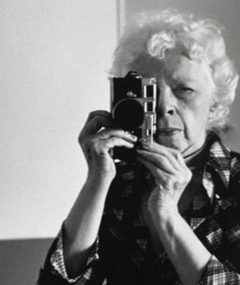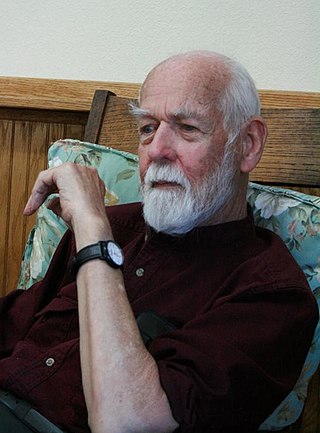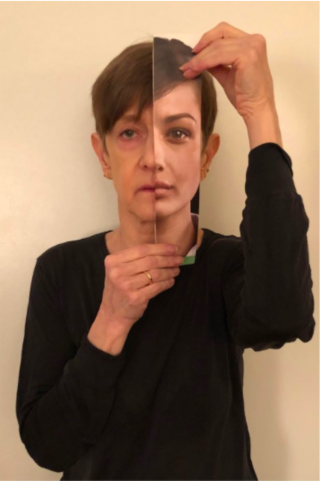Laura McPhee is an American photographer known for making detailed large-format photographs of the cultural landscape. Her images raise questions about human effects on the environment and the nature of humankind's complex and contested relationship to the earth.

Lisette Model was an Austrian-born American photographer primarily known for the frank humanism of her street photography.
Linda Connor is an American photographer living in San Francisco, California. She is known for her landscape photography.
Kunié Sugiura is a Japanese photographer, painter, and multimedia artist. Her chosen medium is the photogram.

David Vestal was an American photographer of the New York school, a critic, and teacher.
Lois Greenfield is an American photographer best known for her unique approach to photographing the human form in motion. Born in New York City, she attended Hunter College Elementary School, the Fieldston School, and Brandeis University. Greenfield majored in Anthropology and expected to become an ethnographic filmmaker but instead, she became a photojournalist for local Boston newspapers. She traveled around the world on various assignments as a photojournalist but her career path changed in the mid-1970s when she was assigned to shoot a dress rehearsal for a dance concert. Greenfield has since specialized in photographing dancers in her photo studio as part of her exploration of the expressive potential of movement.

Judith Henry is a New York-based artist that creates multimedia art works exploring interior versus public self. Henry often uses newspapers, telephone books, and film reels. She also uses snapshot photography. After graduating from college, she moved to New York and married artist Jaime Davidovich, with whom she has two daughters. She currently lives in Williamsburg, Brooklyn.
David Graham is an American artist photographer and professor at the University of the Arts in Philadelphia. He currently lives and works in De Pere, Wisconsin. Embracing popular forms of American photography, David Graham explores contemporary culture through the idiosyncratic nature of the American landscape. His work is in many collections, including the Museum of Modern Art, New York City; the San Francisco Museum of Modern Art; the Art Institute of Chicago; the Philadelphia Museum of Art; the George Eastman House, Rochester, New York; the International Center of Photography, New York City; and the Brooklyn Museum, New York. He is represented by the Laurence Miller Gallery in New York City, Etherton Gallery in Tucson, Arizona, and the PDNB Gallery in Dallas, Texas.

Alice Boughton was an early 20th-century American photographer known for her photographs of many literary and theatrical figures of her time. She was a Fellow of Alfred Stieglitz's Photo-Secession, a circle of photographers whose artistic efforts succeeded in raising photography to a fine art form.
W.M. Hunt is a photography collector, curator and consultant who lives and works in New York.

Penelope Umbrico is an American artist best known for her work that appropriates images found using search engines and picture sharing websites.

Sarah Hasted is an American curator and art dealer. Hasted was the founder and co-owner of contemporary art galleries, Hasted Hunt and Hasted Kraeutler, and has been a curator and art dealer for over 25 years. She has consulted for private collectors, and placed works of art with major Museums as well as corporate collections worldwide. Hasted has also been an adjunct professor at Parson's School of Design since 2003. In January 2017, Hasted was elected President of the Board of a not for profit organization, Moving Mountains Theater Company], founded by actor Jamie Hector from The Wire.
Vera Lutter is a German artist based in New York City. She works with several forms of digital media, including photography, projections, and video-sound installations. Through a multitude of processes, Lutter's oeuvre focuses on light and its ability to articulate the passing time and movement within a tangible image.
Barbara Crane was an American artist photographer born in Chicago, Illinois. Crane worked with a variety of materials including Polaroid, gelatin silver, and platinum prints among others. She was known for her experimental and innovative work that challenges the straight photograph by incorporating sequencing, layered negatives, and repeated frames. Naomi Rosenblum notes that Crane "pioneered the use of repetition to convey the mechanical character of much of contemporary life, even in its recreational aspects."
Sage Sohier is an American photographer and educator.
Frank Maresca is an American dealer of contemporary, self-taught, outsider and 20th-century art. He is a co-founder of Ricco/Maresca Gallery in New York City.
Neeta Madahar is a British artist who specialises in photography of nature, birds, and flora. She has had solo exhibitions in Canada, Barcelona, Berlin, Boston, France, London, and New York and had a book, Flora, published by Nazraeli Press. She was named as one of the UK's 50 most significant contemporary photographers in an issue of Portfolio Magazine.
Jessica Todd Harper is an American fine-art photographer. She was born in Albany, New York in 1975.
Gerald Slota is an American artist and photographer who has been widely exhibited in the United States and internationally. Slota is represented by the Ricco/Maresca Gallery in New York City and the Robert Berman Gallery in Los Angeles. He is known for a deconstructed style of working with his own or found photographs and drawing, cutting, and transforming the images.
Jeanne Moutoussamy-Ashe is an American photographer and activist. She is best known for her work in magazines, newspapers, and several photography books, and also as an AIDS activist.






